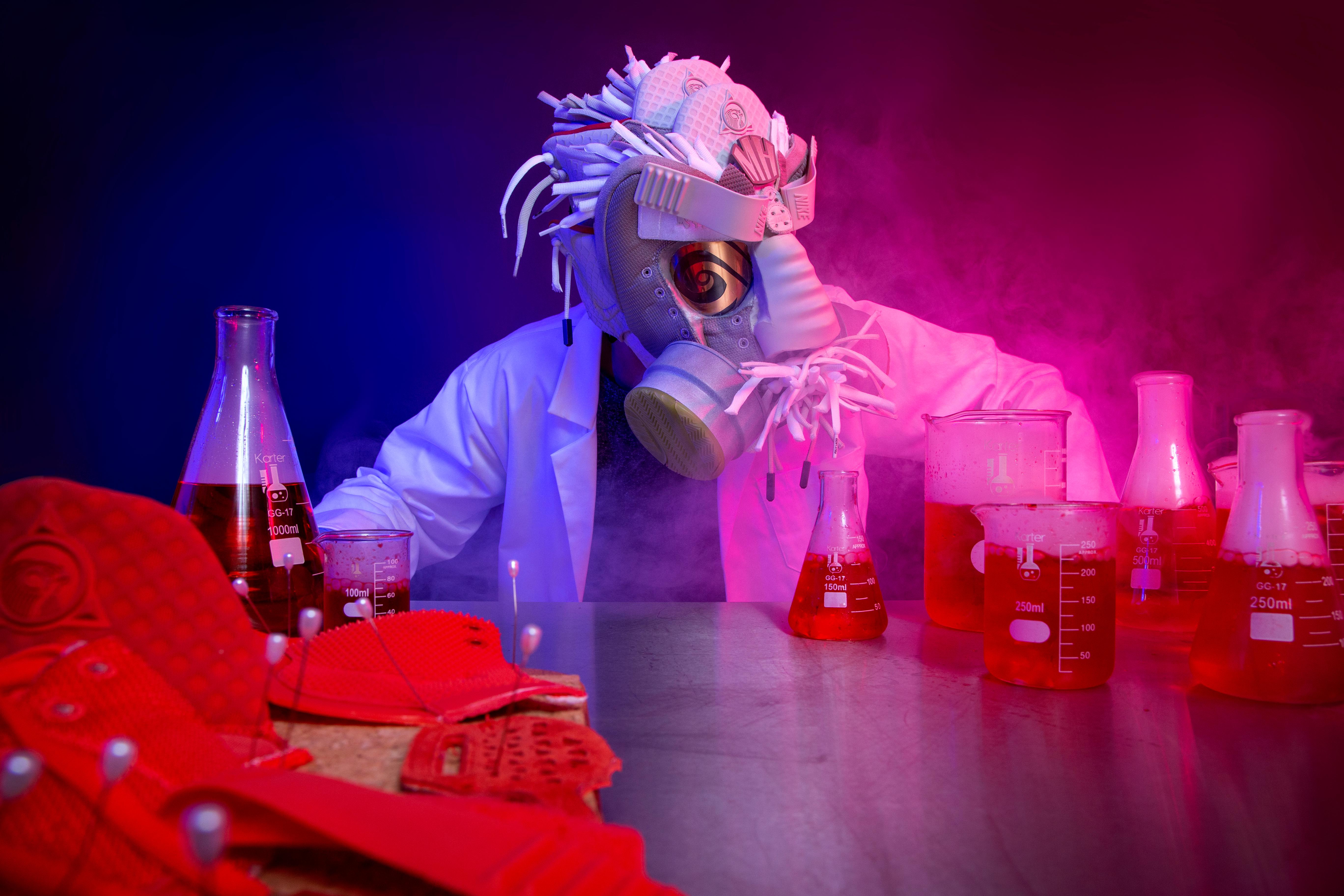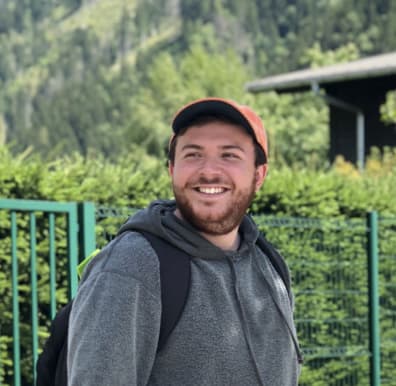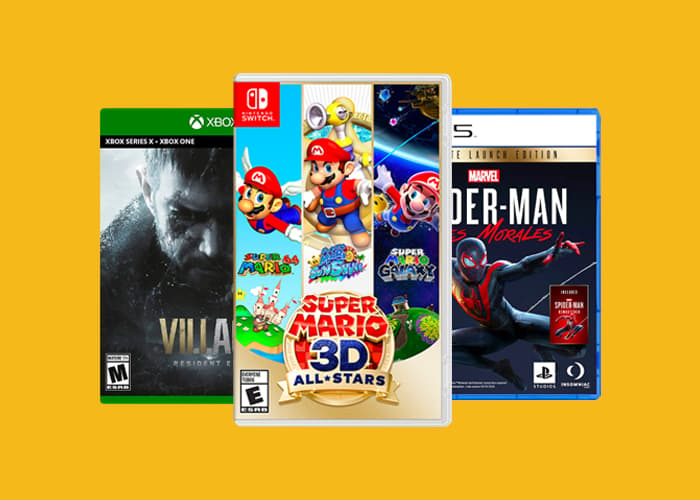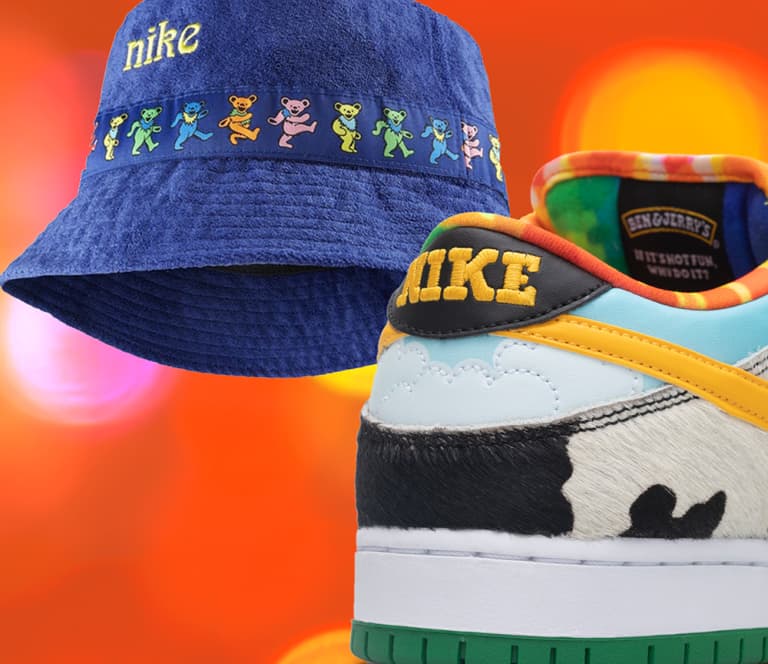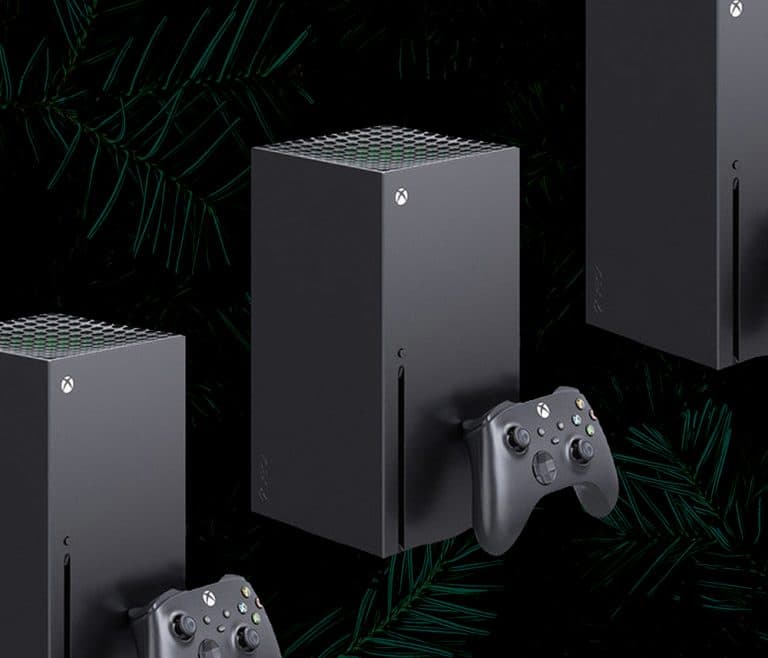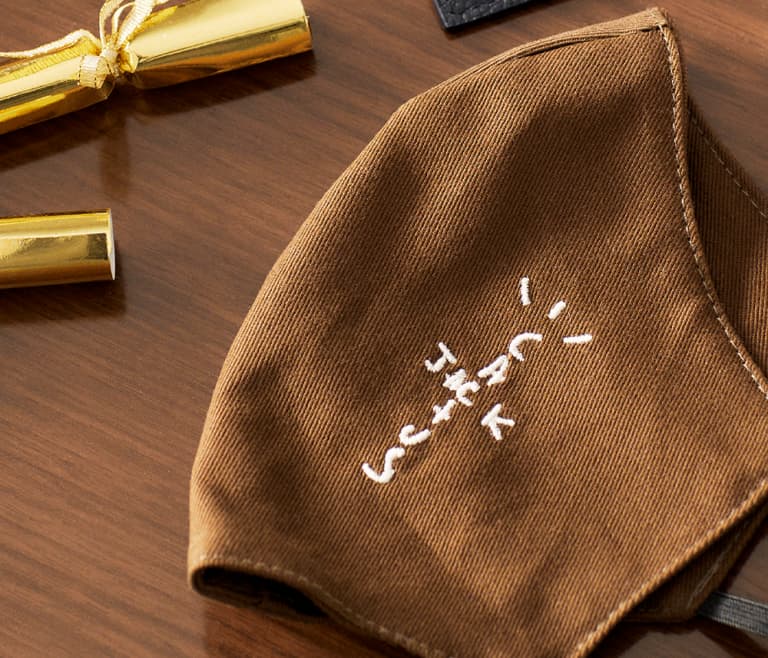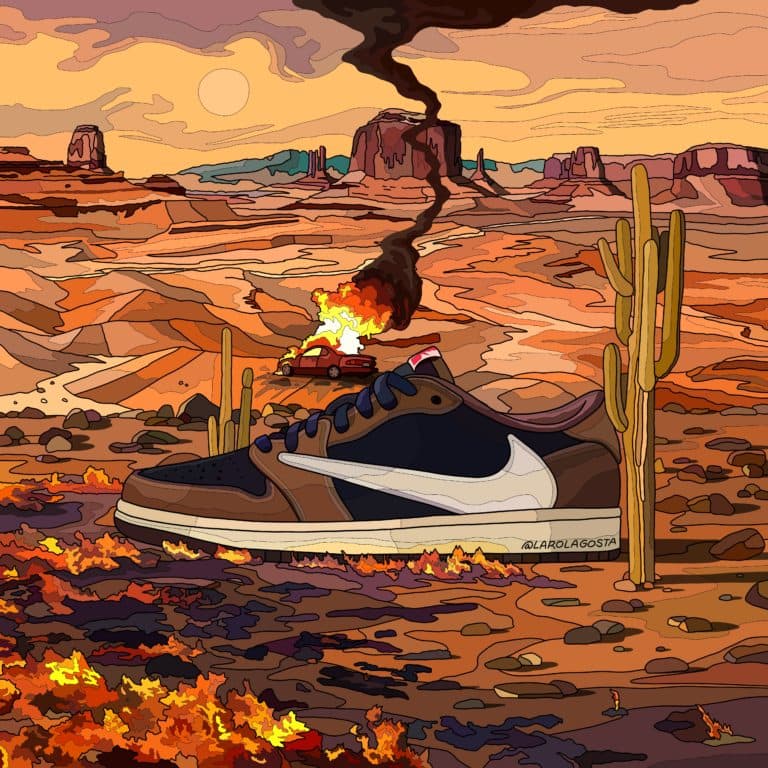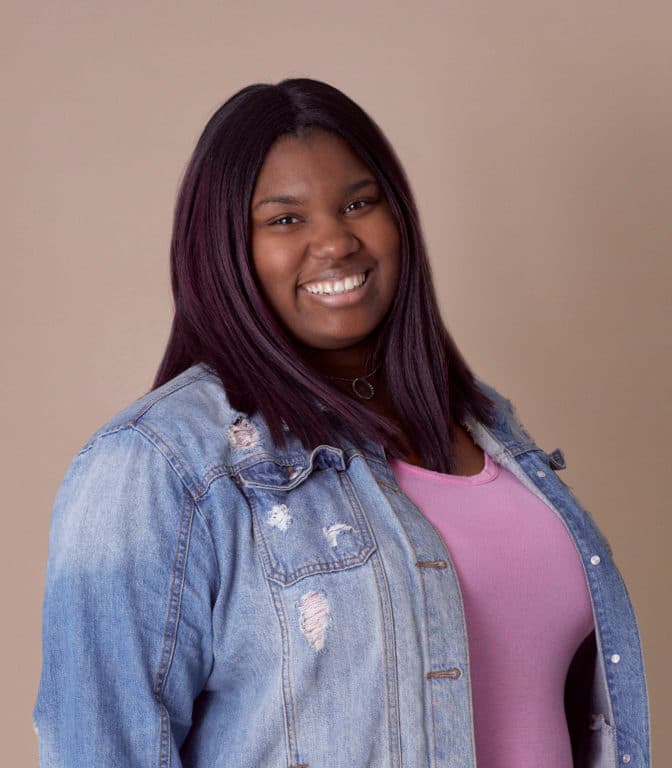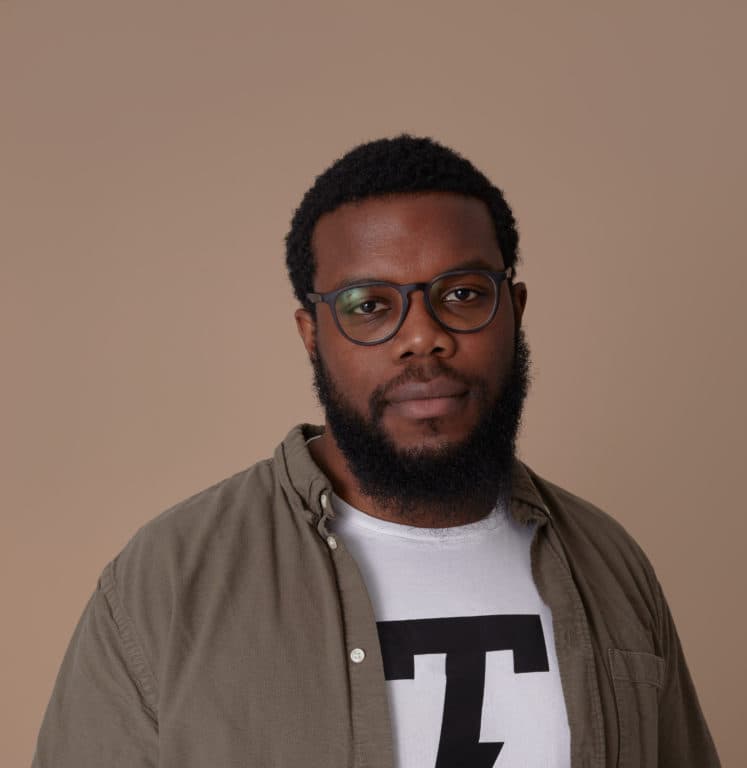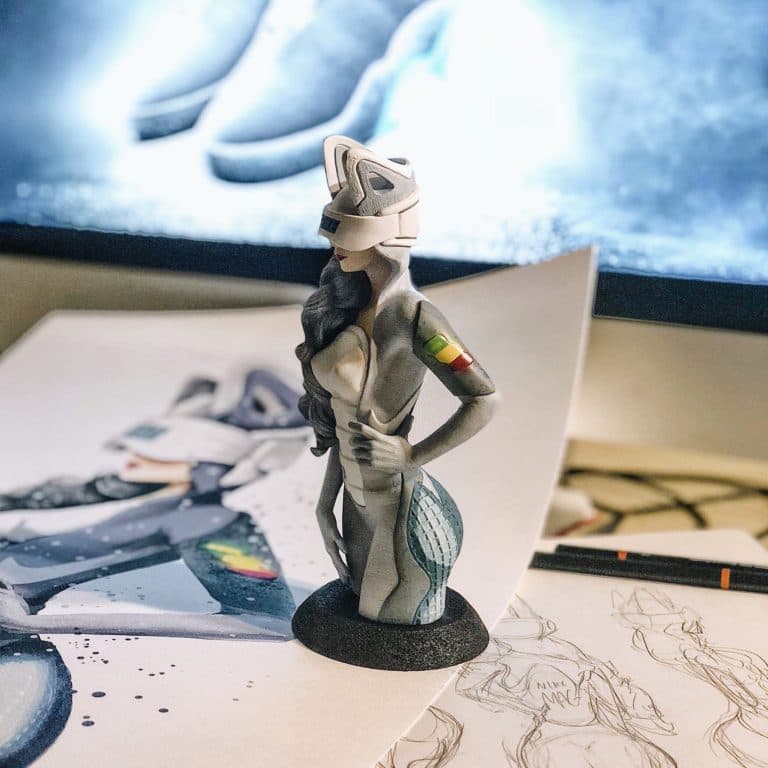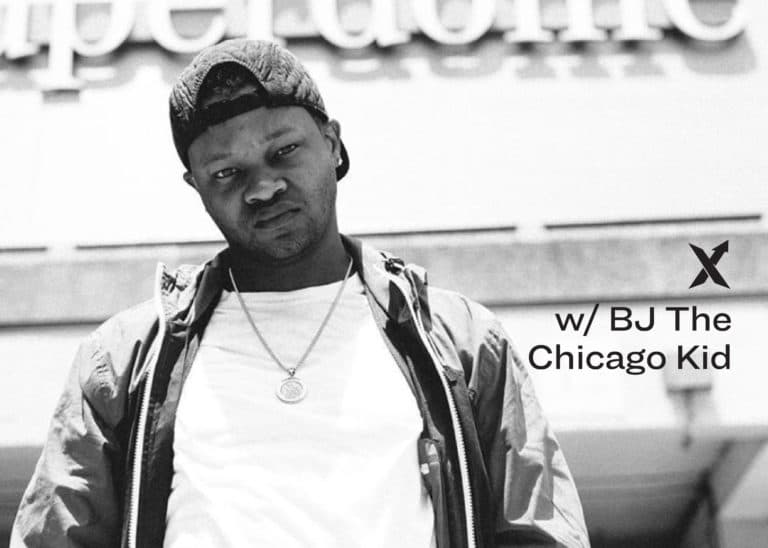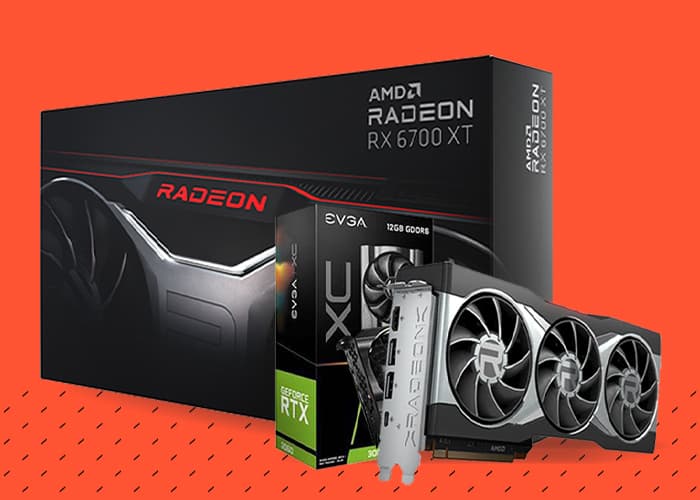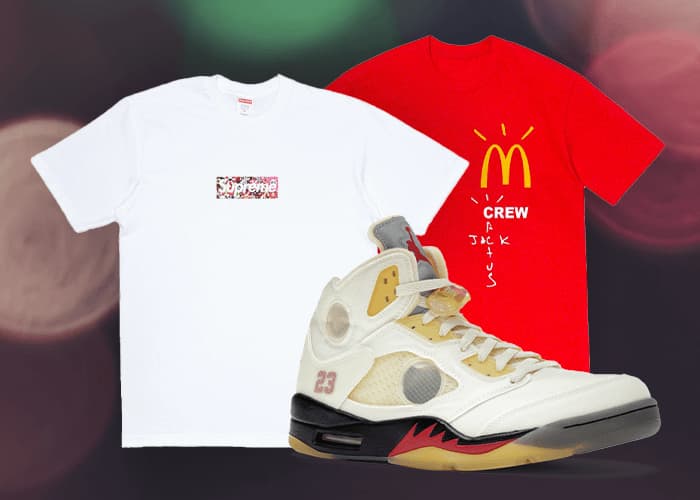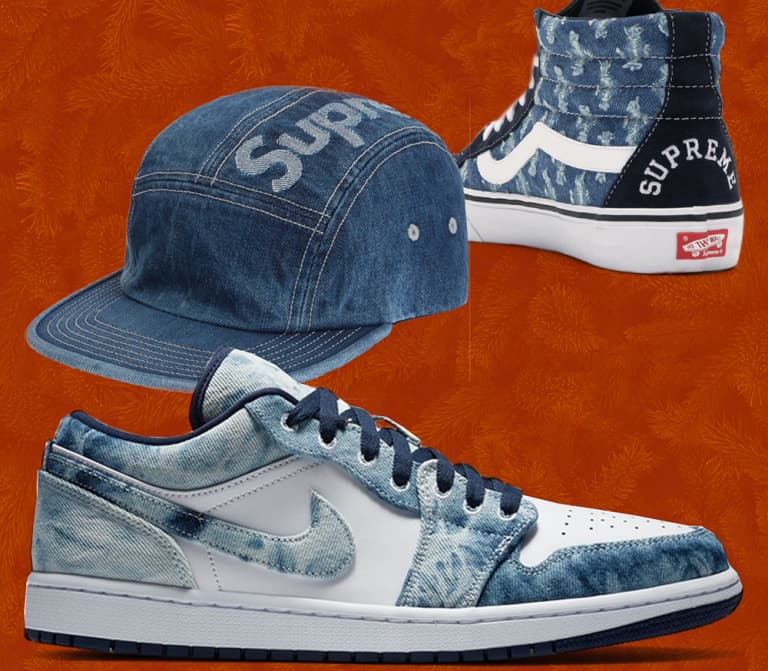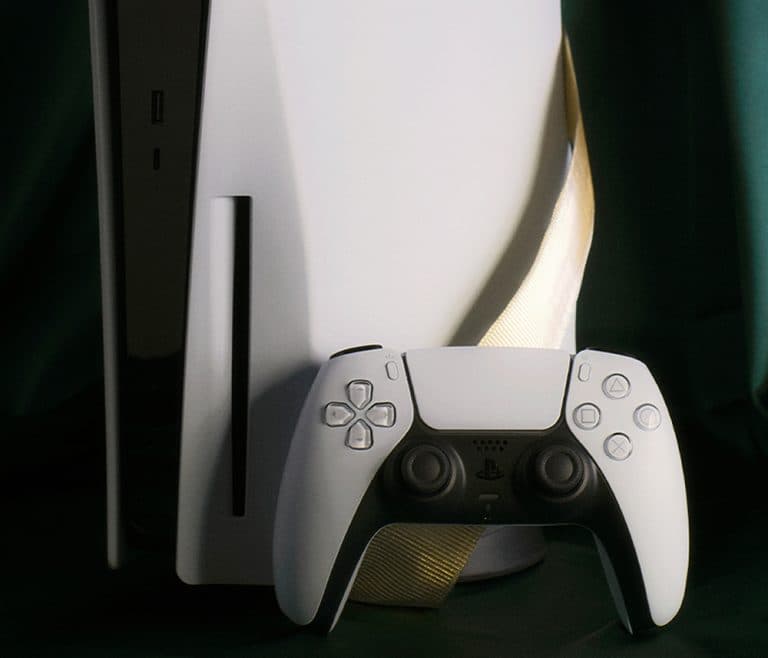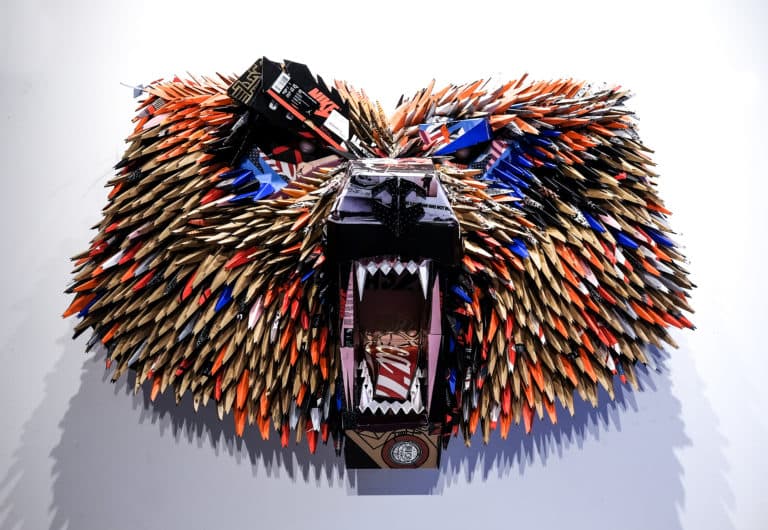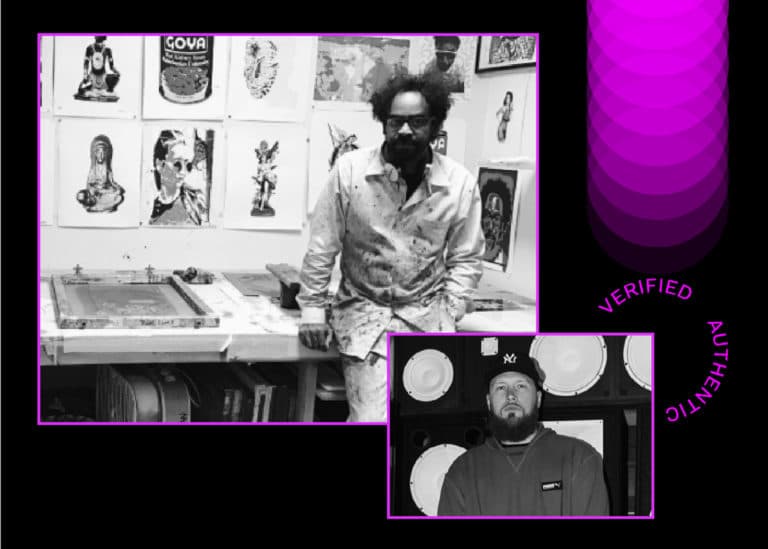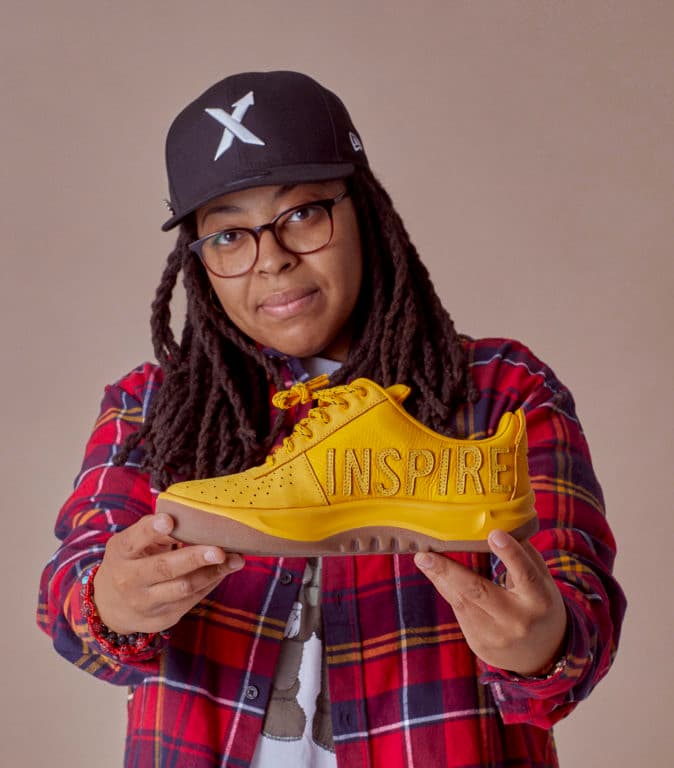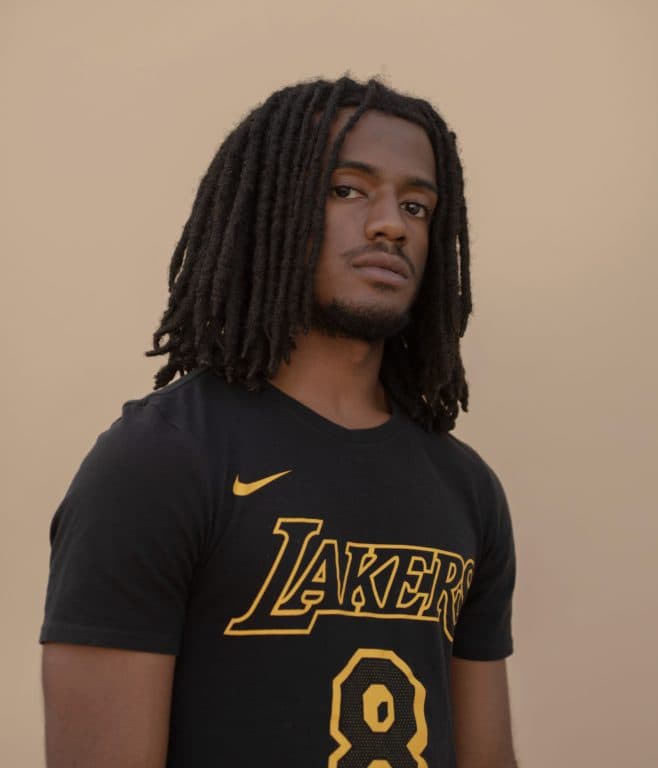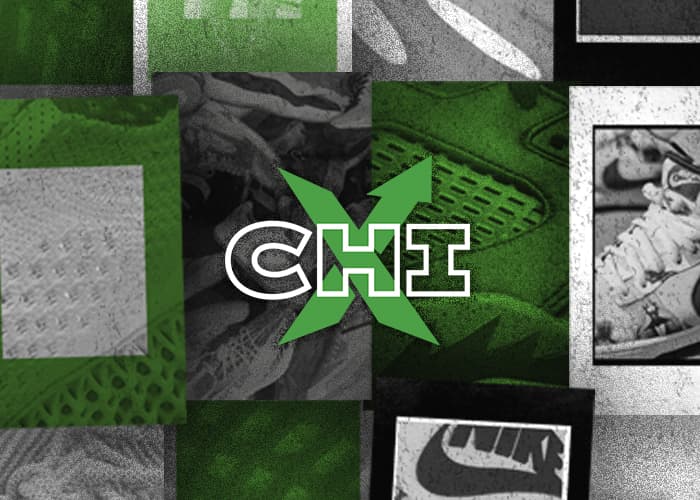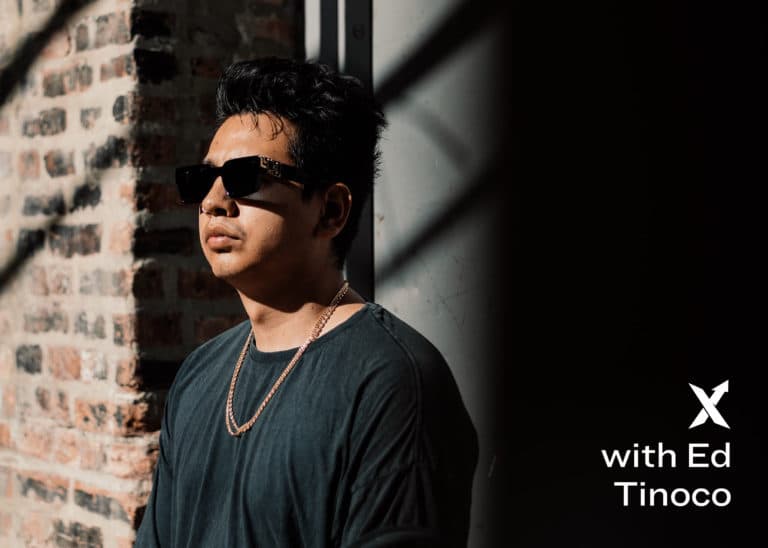
“No Curator” focuses on the most important and cutting edge visual artists who create and draw inspiration from the interconnected cultures of StockX. In this installment of “No Curator,” Freehand Profit talks about the importance of hip-hop, art in his childhood, and much more.
Be sure to check out Freehand Profit’s Instagram, website, and Hellafant 9″ vinyl figure.
The following has been lightly edited for length and clarity.
Would you please introduce yourself?
My name is Gary Lockwood, better known as Freehand Profit.
Freehand Profit is a very unique name. Could you give the background on where your name comes from?
Freehand Profit was the name I developed back in middle school when I started writing graffiti. When I graduated from college, I was looking to get my name out in the art world. But there’s an actor with the same name as me, Gary Lockwood, who was in 2001: A Space Odyssey. And after he stopped acting, he started painting. So no matter how you Googled “Gary Lockwood in art,” it’d come up with his work. So I kind of resorted to Freehand Profit and leaned into it more as my branding. I wanted people to be able to find me and really identify my work.
So, where did you grow up? What were some of your influences from back then?
I grew up in northern Virginia about a half-hour outside of DC. I spent a lot of time in DC going to museums, growing up, and eventually, I went to college at the Corcoran [School of the Arts and Design] in DC. My biggest influence has always been hip-hop. I got into hip-hop in like the fifth grade when Doggy Style dropped. Snoop’s album was the first CD I ever bought. But, as I said, I also grew up going to the museums in DC, and when I would visit relatives in Milwaukee and Cincinnati, we’d always go to natural history museums.
So I’ve always had an appreciation for cultures throughout time and all over the world, and I always wanted to make art inspired by different cultures. It’s a fine line to walk, though. You really can’t recreate work that other cultures have created. Then it would just be appropriation. So I look to make masks that reflect some of those same things that we saw from civilizations throughout time and combine them with a personal viewpoint based in modern society.
Do you have any vivid memories of checking out all these different museums?
There are so many memories that stand out that made me who I was. Going to those museums was huge for me. I remember when people would ask me what I wanted to be when I grow up, I would tell them I want to be an artist. Many people were encouraging, but just as many people would say, “Okay, good luck with that.” They’d say that because we have the stereotype of the starving artists, so it’s kind of a pipe dream for most. But that’s also where the name Freehand Profit comes into play; I put “Profit” into the name as a way to prove people wrong who said, “Yeah, good luck making any money as an artist.”
As a kid, I had an art stand in front of my house, and people from the neighborhood would come and buy the paintings off of this fourth-grader. I just kind of knew this is what I had to do. I remember one lady even said, “I’m going to hold onto this cause you’re going to be a famous artist one day, and it’s going to be worth something.” I always think about those people and even the people who collected my masks early on. I want to prove them right and make that purchase, whenever it was, even more valuable as a way to say thanks for the support when I was a nobody
You mentioned going to art museums when you were younger. Do you remember your first encounter with art?
My first memories of art come from the cartoons that I would watch growing up. Even to this day, I don’t draw a line between fine art and what you would call “pop art.” Even as a little kid, I saw art everywhere. Artists have to design buildings; They create the labels for everything that we buy, even things like ketchup. Even from a young age, I got this sense that art and the work of artists are all around us, and I just remember wanting to be a part of that.
Even though you knew you wanted to be an artist from an early age, when did you say, “Okay, I need to dedicate my time and all that I have to become an artist”?
I graduated from college with my BFA in 2005, and I moved to LA in 2006. At that point, I was staying away from fine art. I was so turned off by the fine arts department in college that I focused more on graphic design. Then in 2009, I started my clothing line called Profit Inc. However, I realized that people don’t want to buy t-shirts from you unless you’re doing something else. The thing that I did was art, and I realized if I’m going to call myself an artist, I need to be making art every day. So I started a project called MASK365, which was inspired by Noah Scalin’s Skull-A-Day project. Every day for a year, I would make or design a mask out of different materials; it was just to get the creative juices flowing. MASK365 was meant to kind of take some of the preciousness out of art-making and get those gears moving at a higher speed and sort of push out all the bad ideas so you can come up with the stuff that’s really original and sticks to you.
Talking masks, you use deconstructed sneakers to make them. Why did you decide to use sneakers as the raw materials for your work?
Sneakers have always been important to me, along with my passion for hip-hop. I always had to have those staples in my collection: The Air Force 1s, the shell toes, etc. I realized that I should be pulling sneakers into my artwork more during the MASK365 project, because I was working with masks and they’re such a symbol of identity and because sneakers have become such a source of identity within hip-hop culture. I realized that was my chance to remix and reimagine icons in new ways, and once I finished with MASK365, I had done like four or five sneaker masks at that point over that year. From there, I knew sneakers should really be my focus, and it pulled me deeper and deeper into sneaker culture. I already loved the classics, but now I started looking for new models to work with and started to show appreciation for all of these different materials being used to construct sneakers. There are sneakers that I would never have looked at or worn before, but now I’m like, “I might wear those,” just because I dig the shapes for a mask and if I fall in love with the shape cause I worked them into a mask, chances are I’d probably want them on foot too.

Tiffany Dunk Lows Grim Reaper Mask // image courtesy of the artist
So what’s your creative process? How do you go from sneakers to art?
It usually starts with the deconstruction of the sneakers. The process is what I call a “freestyle,” where once I’ve deconstructed the sneaker, I let the materials, parts, shapes, lines, and colors determine the character of the mask. From there, I’ll build it up using various thermoplastics, rivets, adhesives, resins, nuts, bolts, 3D printing, basically whatever the concept calls for. Some pieces are conceptualized beforehand, whether it be a sketch or just loosely based on the concept of the story that’s in the shoe that we want to carry forward. On average, masks take about six weeks to complete, but I’ve done masks in just a day, and I’ve done masks that have taken me almost two years to complete.
When you’re thinking through a project, when do you decide which sneakers to use?
This varies. Sometimes the sneaker is the thing that we start with, and that’s the jumping-off point. For example, I had a client come to me with the Jordan DB5 and was like, “What do you want to make out of the DB5?” It was a little bit of a wildcard, but I was like, “I really see this as a deep-sea anglerfish with the UV light hanging overhead,” so we went from there. That same collector wanted an Iron Man mask, so I found shoes that fit that concept. We went with both colorways of the Jordan 5Lab3’s, and I made it into a War Machine mask, and then had it custom painted to the Iron Man colorway by Mache. That was a great chance to collaborate with him, as well.
What has been your favorite sneaker to incorporate into your masks?
I have to go with the Jordan 3. All of the lines and shapes are so well balanced that it just gives me so many options for reimagining that shoe in many ways. I would say that kind of goes for any of Tinker’s designs, but the Jordan 3 is probably the best example of that, just with the curves and shapes and textures of that shoe. I can reimagine that in infinite ways.
Besides the Jordan 3, what other sneakers do you want to incorporate into your art that you haven’t yet?
That group of sneakers is getting smaller and smaller, but we always have new models getting introduced. I actually have the Fear Of God 1 Shoot Arounds and Fear Of God Skylons that I’m looking forward to working with for a rhino mask.
Let’s get Big Picture: What do sneakers mean to you?
Sneakers mean a lot of different things to me. We’ve all had losses in our lives and people who aren’t with us anymore. Early on, part of my grieving was saying, “Alright, I have to live better and do better and take these steps for the folks that aren’t here anymore,” it’s kind of an extension of the saying “walk a mile in another man’s shoes.” I’m here, and the memories that I make in my sneakers are not just for me, but for the folks that I carry with me as well. Sneakers are such a source of identity and a reflection of mood. I think most of us start with the sneakers and build up our outfit from there. In a lot of ways, outfits are a kind of a suit of armor, and it all starts with the sneakers.
Same question, but for art: What does art mean to you?
Art is everything to me. From a personal standpoint, it’s a form of expression and self-reflection. It’s also pragmatic to me now. It’s a way that I take care of myself and my family, and it’s a constant source of inspiration that’s always regenerating.
Speaking of your inspiration, what influences you?
Music is probably my most significant influence. Pop culture is a big influence, like comics and anime. I also try to pull inspiration from my collectors. There are a lot of things out there that are just not on my radar. A collector may bring me one of those things, and I can be inspired by it, so I pull from their story, allowing me to tell stories that are bigger than just my own experience.
How are you able to get your art out to people? Do you utilize galleries or social media? What’s been the big engine for distributing your art?
Instagram has been the biggest game-changer for me. I got on Instagram back when you had to have an iPhone to use the app, and I literally bought an iPhone so I could get on Instagram. That has been the most prominent vehicle for sharing my work with the world, so much so that it’s kind of putting galleries out of business. For example, why would I split a sale 50-50 with the gallery who didn’t do any work for that sale? I’ve had work sell through galleries simply because I posted that it was available through that gallery, so they didn’t do any work for it. That’s not saying that all galleries are like that, though. I’ve had the pleasure of working with great galleries like CAM Raleigh. But as far as the actual sale of the work, nothing beats social media.
So Instagram is the platform, but who is your audience?
My audience or I should say, my collectors are people who collect art and collect sneakers, which is kind of the obvious intersection. Of course, we have people on both sides that just collect sneakers or only collect art as well. But it’s people who understand the sneaker world, but also understand the idea that we have to sacrifice what we are for what we might become. In the art world, it’s a little absurd. Like take your gas mask: It’s not necessarily something that we’re trying to evolve to, but something that’s a self-reflection of the now, and I think a lot of my audience can enjoy the superficial side, which is just the love that we have for the sneakers, but also the deeper meaning there.
Do you compare your work with other contemporary artists? Do you think about your place in the contemporary art scene?
I had a conversation recently with somebody who said, “Oh yeah, this artist is more in the fine arts space.” I took a little bit of offense from that because I look at my own work as fine art. But I also look at it as accessible to people who might not normally find themselves appreciating fine art. That’s been my goal since college because I was making hip-hop-inspired art in a space that was not understanding or appreciative of those visual languages.
I think I straddle the fence. I feel like a lot of artists are just fine art or just graphic design or just pop art, but I don’t see any of those boundaries within the art world. I will do work that fits the project and fits the concept, and whether it’s about to be hung in a gallery or if it’s going to be used in a commercial, I’m considering all of those things when doing my work. Now just because I might be doing commercial work, that doesn’t necessarily mean it’s devoid of a fine art aspect. I think a lot of other people see those boundaries and get hung up on those boundaries. But I’m going to continue to straddle the fence and just do what’s right for the work itself.
What do you hope to represent through your work?
I’m here representing hip-hop culture the best way that I can. I am exploring issues of identity and consumerism within the culture. I also marketed myself as a rapper before I started putting my time in as a visual artist. I also worked as a manager, designer, and marketer for an independent label, and we were working on a hip-hop album, so I learned a lot about marketing and promotional techniques through that. I consider the work I do now as part of the same space: Each mask is a track, and a collection of masks can fit together like a cohesive album.

Union Air Jordan 1 Mask // image courtesy of the artist
So you’re representing hip-hop culture. How do you represent sneaker culture?
I think the models that we choose, the colorways that we choose, and the styling of each piece all come together to reflect an authentic point of view. Sneaker community representation comes from working with the classics, the hype, and the sleepers. It comes from working all across the board because sneaker culture is all of those things. It’s not just the hypebeasts, and it’s not just the OGs. It’s kind of all of us; Our tastes intertwine and overlap, and I look to do that through my body of work.
You mentioned representing the different facets of the sneaker community. What are these different facets?
I’d say we’re a pretty diverse crowd. I mean it’s similar to hip-hop, right? Like hip-hop has different cliques, whether you’re big on 90s’ hip-hop or mumble rap. It’s like you almost can guess what type of music or what artists somebody listens to based on their sneaker taste. And the age range is growing, too. Like you got guys that have been collecting since the eighties and nineties, and they’re at the same events as 12-year-olds that just got into it and are trying to grab up whatever hype they can. It’s so diverse, and as the community grows and evolves, the collectors will grow and evolve as well, which I look forward to seeing.
And I think a lot of the young cats coming in are following the hype while they figure out what their taste range is and what their wheelhouse is. As we move forward, we’re going to start seeing more defined taste groups, whether it’s, you know, Jordan collectors and Air Max collectors, which we’ve always had, but now we’ve got 17 models from LeBron. So eventually, we’re going to see people that have crazy LeBron collections like we’ve seen from JumpmanBostic and these guys collecting Js over the years.
We’ve talked about art and sneakers, which are distinct things. What’s the difference between art and consumer products?
The simple answer to me is the quantity being made. I look at that as an art piece, just the same way that maybe somebody who is a painter or photographer would sell prints. So I think that the big appeal of something that’s limited edition almost automatically puts it into this art category, where there’s only so many of these made and the rarity adds to not just the value, but the art of it. I think those are some ideas that have been institutionalized into art, but I think the rarity is the big thing. It’s a very thin line for me because the sneakers that we wear are already art, and artists have already had their hand in it, but it also can be elevated just by our appreciation of it.
What should people know about your work that they don’t already know?
I think that people should know that there’s more to it than just a mask made out of sneakers. It’s more than just the absurdity of sneakers on a face if you look closely at the photography and the different things that I build into the mask. But there’s a bigger story there and a deeper meaning. Overall, the sneaker masks to me are reflections of what I look for in hip-hop, which is the balance of the mainstream and consciousness. We can celebrate having fly shoes and fresh gear, but we also have to have that awareness that things aren’t as they should be and that it’s a world at war. This awareness of environmental destruction and civil unrest is why I use the gas mask quite often, and I think that that mask represents our current cultural standing. All cultures throughout time had masks that they used for ceremonies or various rites of passage; I think in our era, unfortunately, the gas mask represents us because of all of these issues that we are facing.
Any plans to try new art forms or new mediums?
I’d say in the last year and a half to two years, and I started 3D modeling in ZBrush. In the last year, I started doing 3D printing. My mask work is constantly forcing my evolution through new techniques and new materials. For example, I started resin casting because I couldn’t paint something to be see-through red. I was making the Bred 11 mask, and I wanted the canister and the gas mask parts to match the shoe’s translucent red sole. But obviously I had to find a new way to make those parts in a translucent red, so I let those new processes come to me organically. Once a mask or a project calls for something new, I have to come up with that solution and then learn that new technique or try out that new material. As far as new bodies of work, I do have plans for a body of work with mythological creatures made out of youth sneakers. Again, I’ll be tying in my inspiration from natural history museum masks and the large animal exhibits and the dioramas, and building this alternate universe where things are made out of sneakers.
What does success look like for you? How will you know when you’ve made it?
I feel like that line keeps getting back a little bit. I don’t think success is this finish line where I’ll get there at one point. I just get little pieces of it spread out throughout my journey: The first time I get to work with an artist who inspired me, or when I get into a gallery that I never thought I’d get into. The next milestone for me is when I can buy a house with money that I made by making sneaker masks. That’s a hell of a milestone for me, being able to reach that point, and all off of something that plenty of people told me wouldn’t take me anywhere. Yet here I am, putting a roof over my family’s head with my art and creativity. So I think that that’s success, and I feel it every day when I wake up, and I’m able to feed myself because of what I’ve done with my hands through my art.
Last question: What else should people know about you?
I’m a big dog lover. If I wasn’t doing art, I think I would probably go back to dog training. I just want to encourage people to rescue and adopt from their local shelters before they buy from a breeder.
See more from Freehand Profit and learn about more artists within the culture in “No Curator.”


